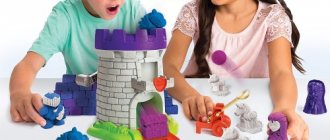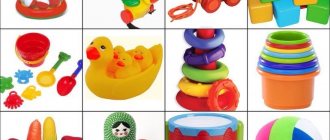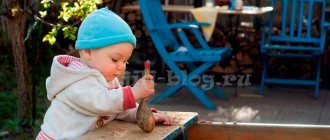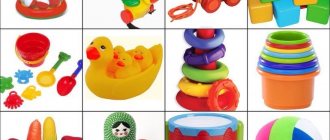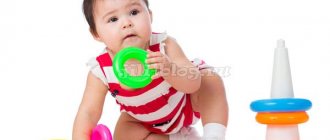Kinetic sand (kinetic sand - English spelling) is a very interesting modern material for the development of children. You can practice with it right at home, for example, in rainy weather. It will bring great pleasure to the child, but it is expensive and is not sold in every store. Create an analogue of such a mixture with your own hands. Its components are available to everyone and cost little.
Kinetic sand is an original modern composition developed in Sweden. It can be used for entertainment, during the educational process, and even for therapeutic purposes. The unusual substance consists of 98% natural sand and a safe binder. It has a soft, pleasant consistency, which creates a feeling of fluidity of the mass, although it looks like an ordinary wet substrate. You can build Easter cakes, towers from it, roll balls and sausages (like plasticine). It is cut with a knife and retains the shape made using stencils. The color of the game mass is light brown, as close as possible to the natural one. You can make kinetic sand with your own hands. The composition of a homemade product will be slightly different from a purchased one.
Two types of mass for the game
Often kinetic sand and living sand are combined into one concept, putting an equal sign between them. In fact, these are not synonyms; they imply different compositions. Kinetic sand is a mixture of sifted fine fractions of ordinary sand with a silicone binder. But the living one consists of crushed shell rock, so it is white in color and costs more. The first is produced in Sweden, and the second in South Korea. A kilogram package of kinetic sand costs about 750 rubles, and a five-kilogram package costs 3000.
Kinetic sand does not lose its properties. Even if it gets wet, nothing bad will happen. After drying, the properties of the mass will again become the same. It is recommended to use plastic containers with lids for storing the composition only to prevent dust from getting on it.
A package (0.7 kg) of live sand costs 1,000 rubles, and one and a half kilograms costs 1,500 rubles. This mass dissolves in water, so it cannot be wetted. If moisture gets into the mixture, the spoiled part will need to be thrown away. The composition must be stored in an open container, as it needs to breathe. But you can’t keep it in direct sunlight. Just as you shouldn’t work with it on paper or fabric. Plastic is suitable as a base.
Types of material and its cost
The branded sand miracle material from the Swedish manufacturer Waba Fun is sold in various packaging: 1 and 5 kilograms (in the latter case, the package contains two packages of 2.5 kg each, so sellers often sell them separately).
Recently, the company began producing colored products in yellow, red, green, blue, purple and pink shades. The packaging of such a product weighs about 2.27 kg. You can also purchase a bag of sand in two colors of the same weight. The average cost is 2,000 rubles.
Multi-colored kinetic sand is also available for sale - sand for children of unusual colors, produced in the “Precious Stones” series (emerald, onyx, sapphire, amethyst). The addition of iridescent particles gives the sand an amazing hue. The average price is 1,460 rubles per 454 g.
Additionally you can purchase:
- sandboxes of different sizes (800 - 1,800 rubles);
- toys-molds for kinetic sand (about 150 rubles);
- toy scoop (50 rubles).
How much sand will be needed for a child to be able to play fully? It all depends on the age of the baby. For one-and-a-half-year-old children, 1 kilogram (1,000 rubles) is enough; three-year-olds need at least 2.5 kg of sand (1,600 rubles).
And a company of several kids will need a 5-kilogram package of kinetic sand to build serious structures. It will cost approximately 3,200 rubles.
It is not possible to purchase kinetic sand in all children's stores due to the insufficient prevalence of play material, so the best option may be to order online and have it delivered directly to your home.
Advantages and disadvantages
Children's kinetic sand promotes development and imagination, and also provides a great pastime in any weather. Like every toy, this composition has its pros and cons. The positive qualities of kinetic sand are as follows:
- gives pleasant ;
- holds any shape well;
- easy to operate;
- it is easier to remove the spilled mass than ordinary sand;
- does not require special storage conditions;
- does not dry out;
- does not deteriorate from water;
- allows you to offer your child many different games (you can make Easter cakes from it, build towers);
- develops tactile sensations and fine motor skills;
- has relaxing properties;
- It is quite safe, as it does not contain toxic substances, dyes, or flavors.
Despite the large number of advantages, there are also disadvantages:
- collecting small particles of the mass is not as easy as the manufacturers promise (removing with a broom or rag is too wasteful, given the high cost of the mixture);
- sticks to clothes and shoes if you step on it, while firmly sticking to the surface it hits;
- It has a high density and mass, so there is not much in 1 kg of mixture.
Kids love using kinetic sand. The photos clearly demonstrate this. The child will be happy to play with such a mass for creativity. Considering all the positive aspects of the gameplay, every parent should pay attention to this product. If you make kinetic sand with your own hands, the composition will not have the same properties as store-bought sand, but it will be very similar to it.
Reviews from parents
Most parental reviews of kinetic sand are positive. Mothers are happy to note that children are ready to play with such material for hours. In addition, cleaning it is quite simple and does not require much effort.
At the same time, there are reviews indicating that some children quickly became fed up with the kineticist. That’s why experienced mothers recommend first buying a small package for testing or playing with such sand from friends (another option is to prepare kinetic sand at home).
If your child is tired of the purchased sand, try putting the material away in a secluded place for a couple of weeks, and only then play new games with the purchased molds and additional play accessories with your child.
Childhood is a fertile period for creativity and the development of imagination. Kinetic sand is an ideal material for realizing a child’s fantasies. And joint activities with your child will help to further strengthen the parent-child relationship.
Where can I buy
Kinetic sand is still a new product on the baby market in our country. Not every store, even one specializing in the sale of educational games, can buy kinetic sand. It happens that sellers themselves do not know and have never heard of such a thing.
The best option is to order unusual sand from an online store. There you can choose different packaging weights of 1, 2.5 or 5 kg. In addition, special molds or a sandbox for use at home are included in the set or separately.
What training options can be offered?
The advantage of kinetic sand is that it is convenient to carry out both developmental and therapeutic procedures. Here are a few ways to play with this lineup:
- pouring from one hand to another or between fingers causes pleasant tactile sensations, creating conditions for;
- putting the mixture into jars with a scoop or from molds into buckets (trains hand coordination, and observing the process has a calming effect);
- offer to choose balls, buttons and other small objects from the sand (trains attention and perseverance);
- creation of traditional pies, Easter cakes, as well as turrets, animals and other objects.
Sand castles that will inspire you
Sand sculpture festivals are held all over the world. One of the most famous in Russia is St. Petersburg Sandfest. Watch a video of how professional sculptors work with sand.
Not only castles are built from sand, but also a variety of sculptures. The Harrisand World Sand Sculpting Championship is held in Canada.
The world record belongs to the 17-meter sand castle, which is the tallest castle in the world. It was built in Germany. You can see what it looks like in the video.
Molds and accessories
Children have fun playing with kinetic sand. The Castle Molds kit for creating a castle significantly diversifies the process. Unlike conventional sets of buckets and scoops, it includes two special syringes designed for extruding cylinders and parallelepipeds of different heights. There is also a special shape for the tower with its roof in the form of a cone, a castle wall, and a round platform fencing. The set includes plastic knives that are easy to cut kinetic sand. You can order such a miracle via the Internet for a very reasonable price of around 500 rubles. The child will engage with these objects for a long time and with enthusiasm.
DIY kinetic sand: composition
To create a mass for playing with your child, it is important to use only natural ingredients. The given recipes offer those ingredients that are in the kitchen of every housewife. Using food coloring, the substance can even be made colored. If you create kinetic sand with your own hands, the composition will be as follows:
- potato starch or;
- water;
- color pigment;
- sifted sand.
The last component is the main one. If you don’t have one (some people use it to make Turkish coffee), you can buy a mixture of fine fractions at a hardware or garden store, or use a sieve to make it from a regular one that you bring from the river bank. Other ingredients are easy to purchase at any grocery store.
How to make kinetic sand
Making your own mass for a children's game is a fairly simple matter. You can even involve a child in the process. It will be interesting for him too.
Option 1
The first recipe is based on This mass may dry out during storage. Just crumble it a little with your hands and add water. The number of components is:
- prepared quartz sand - 4 cups;
- potato starch - 2 cups;
- water - 1 glass.
The creation sequence is as follows:
- Mix sand and starch.
- Mix the ingredients thoroughly.
- Gradually add water in small portions. See what consistency you get. Try not to overfill. If there is too much of this component, the playing mass will become too soft and will not hold its shape well.
Option 2
Take the following amount of ingredients:
- prepared quartz sand - 5 cups;
- corn starch or flour - 2.5 cups;
- water - 1 glass;
- food coloring.
The cooking method is as follows:
- Take a clean dish, basin or bucket.
- Pour sand and starch into it.
- Mix thoroughly.
- In another container, dilute food coloring in water.
- Add the resulting color solution to the main composition.
- Bring the mixture to a homogeneous consistency.
You can try both options, let your child play with them and choose the best one. If you are worried that your baby will want to taste the mixture, you should first bake the sand in the oven to disinfect it.
Thus, any parent can conduct a developmental activity and provide their fidget with an interesting activity, even at home. If you consider purchasing a branded kinetic sand composition wasteful, prepare a mass of similar properties with your own hands. It is made from natural ingredients. In this case, you will know for sure that not only the base, but also the binder is an environmentally friendly material.
Today kinetic space sand
– a bestseller in all children's stores. At first glance, it resembles ordinary sand, but in fact it is different from it. Cosmic sand is soft and fluffy, it does not stain your hands and does not remain on them, so it is ideal for children's games. You may have noticed in shopping centers that children are offered to paint plaster figures with colored sand or make interesting figures from it.
In this article we will tell you how to make colored kinetic sand. Now you can make your own sandbox at home at minimal cost.
In summer, all children love to play with sand in a sandbox, on the seashore or on a river. Unfortunately, ordinary sand is suitable for building houses, castles and other figures if it is wet enough.
Two years ago, kinetic sand appeared on the children's hobby market, which consists of 98% natural sand, and the remaining 2% is a special substance that prevents the material from drying out. The developers keep the composition of Kinetic Sand secret; in addition, its cost is quite high. Modern parents have already tried to make it at home, try it too.
Take two cups of starch and a cup of water and mix thoroughly. The result is a non-Newtonian fluid, which is similar in properties to the viscous substance in the original kinetic sand. Now add 4 cups of sand and mix thoroughly.
To make colored kinetic sand, you need to use food coloring. To make the mixture fully colored, dyes and a little water are added to the sand. Be sure to mix thoroughly. Instead of dyes, you can use gouache. After the mixture is ready, it needs to be dried well on old newspapers.
You can make colored sand from semolina and children's crayons. To do this, chop the latter thoroughly and mix with semolina until smooth. Add dye and make sand of different shades in different containers.
The positive aspects of kinetic sand include the following:
:
- molds well; - does not require large financial costs; - does not create a feeling of dirt and is quickly cleaned from hands; — finished products from it keep their shape well.
Also watch the video: How to make kinetic sand at home
Living sand
is a good therapeutic agent for children and adults. Now parents can set up a sandbox at home and actively participate in the emotional development of the child.
If you are planning to go to the sea this year, do not forget to bring some regular sand to make kinetic sand out of it. Your child will then be able to play with sand at any time of the year.
To please your child, you don’t have to buy expensive toys in the store. It’s enough to show your imagination, look up a couple of ideas on the Internet and, together with your child, make, for example, kinetic sand, which will captivate the little one for a long time. You can look for affordable ingredients in your kitchen or buy them at your local store.
Kinetic sand makes it easy and fun to develop children's creativity and tactile perception.
How to build a sand castle on the beach
The beach is the best place to build something truly impressive. There is as much sand as you want and you don’t have to carry water from afar. You only need to take your tools with you.
What is needed for construction
A set of tools for building a castle. Level - beginner
Here's what you'll need:
- two buckets. One is to carry water, the other is to mix sand with water.
- shovel. Its size depends on the size of the castle; even a child’s spatula will do for a small one.
- trowel, plastic sticks, knife, brush - everything that will help you work with small parts.
Tools for working out details can be made from scrap materials - plastic bottles, branches, drinking straws. Walk through the house, collect everything that seems suitable and go to the beach.
A set of tools for building a castle. Level - pro
Professional sculptors use more materials to build castles:
- formworks are being built. This is a wooden structure into which sand is poured, filled with water, and they wait for the base to compact. Then the wooden frame is removed.
- adhesive agent. It is used together with water, thanks to which the locks can stand in both snow and rain.
- trowels of different sizes, palette knives, brushes and finishing tools. The more elaborate the sculptor’s work, the more impressive the result.
Sand castle in Valencia, Spain
Construction technique
When an amateur builds a sand castle, he can make individual elements out of sand and assemble them together.
Professional sculptors work with sand, as with other materials: they cut off the excess from a huge pile and, when the castle has recognizable outlines, cut out small details.
Whatever method you choose, start with the main thing - lay the foundation. The foundation of a sand castle is simply a mountain of wet sand. Compact it with your hands or a shovel. Wait until it dries a little and start creating.
Once the foundation is ready, begin to give the castle a recognizable outline
Life hacks for castle builders
- It is better to mix sand and water in a ratio of 8:1. It will be wet, but the tower will not spread.
- In hot weather, sand can dry out too quickly. Then a spray bottle of water can help.
- The most stable form of a castle is a pyramid. Build tall towers closer to the center, and small ones at the edges. This lock will last longer.
- If you want to build a big castle, but only have a child’s shovel at hand, you can prepare the foundation by rolling out a pile of sand with a bucket.
- You can use a plastic bottle to build a tall tower. Cut off the neck, add wet sand and turn it over.
Near the pyramid-shaped castle you will definitely have time to shoot a lot of stories. These locks are the strongest
How is kinetic sand beneficial for children?
They name a new product that recently appeared on our market: panetic, dynamic, hygienic, gymnastic, genetic, cosmic sand. Everything is past. The real name of this miracle product is kinetic sand.
Having appeared on the gaming market, it immediately aroused delight among kids. The correct alternative names for such “magic” sand are kinetic, living, lunar. This variety means there are possibilities for choosing materials for sand, but the point is one thing - to bring pleasure to the child.
With the help of such sand, a child aged one year or older can realize his desire to sit in the sandbox without leaving home. Bad weather won't stop you from digging in the sand, building towers, making sand dumplings - making magic sand at home is not so difficult, but the effect is obvious. Having fun in this way, the child unnoticed develops:
- fine motor skills of the hands, which helps coordinate the nervous system and muscles, activating connections between the hemispheres of the brain;
- eye - after all, you need to estimate how much sand will fit in a particular mold;
- perseverance - quickly completing a sand tower with your own hands is not so easy;
- thinking - using a variety of food dyes, you will help the child learn colors, and when counting the figures made, the child will quietly learn the numbers;
- creativity - you can build figures using beads, or you can come up with new ones and sculpt them, or just draw pictures on the surface with your finger.
The advantage of kinetic sand is that you can play with it at home without going outside.
After you have made your own version of kinetic sand, following our recipes for beginners, you should adhere to the following rules to extend its service life:
- Before starting to play with such material, you need to dry your hands;
- try not to place the sandbox in direct sunlight;
- do not add components to the sand that are not specified in the recipe;
- If water gets into the sandbox, wet particles need to be removed and dried.
Why is it needed?
- Great game for kids. They make Easter cakes, look for treasures, etc. And parents have a lot of time.
- Spinners are no longer in fashion. Switch to kinetic sand. After all, we've all played in a sandbox at some point.
- Get creative and use it as a decorative element. Imagine, guests come, and you have sand installations at home.
- Sand is like an anti-stress. The grains of sand spread between your fingers one after another. Bliss!
- In general, this is an excellent remedy for aggression and irritability. Offer your girlfriend kinetic sand these days, for example.
Options for making kinetic sand at home
Kinetic sand, an invention of Swedish innovators, appeared here recently, but immediately found its admirers in children and parents. Today, you can prepare several versions of this sand at home. Look at what ingredients you have at home and what you need to buy to make this magical sand - and go ahead, create magic!
From starch
To make live sand from starch, you will need:
- 5 parts of fine sand purchased at the nearest hardware store;
- 2.5 parts cornstarch (flour will also work);
- 1 part water;
- food coloring - from vegetables (beet juice will give a red color, carrots - yellow), or purchased at a grocery store.
Mix sand with starch (flour) in a large bowl, and dissolve the dye in water in a separate container. Then gradually add the colored liquid into the sandy starch and mix your mixture thoroughly. Transfer it to a container with a lid. Living sand is ready!
From semolina
For games and various decorations of household items, you can use colored semolina. What is needed for this:
- semolina;
- alcohol (replaced with vodka);
- food coloring;
- paper.
Add a couple of drops of dye into a container with semolina and add alcohol, stirring, until you get the desired consistency. Then place the mixture on a sheet of paper in a thin layer and dry it, then pour it into a container with a lid. The use of alcohol prevents the semolina from swelling, fixes the dye and dries the material.
From soda
Sand without sand - is it real? Yes, if you replace it with soda. The composition of this mixture is very simple. To make living sand you will need:
- 2 glasses of soda;
- 1 cup baking powder;
- 1 cup of detergent (can be replaced with liquid soap).
Gradually adding soap to baking soda and baking powder, mix the ingredients. The end result will be a wonderful airy and crumbly mass that will be a pleasure to play with.
Made from colored quartz sand
The closest thing to the original Swedish product, this kinetic sand is made using quartz sand. It consists of the following ingredients:
- boric acid;
- quartz sand;
- silicate office glue.
Thoroughly mix boric acid with glue in a 2:1 ratio (for example, 2 tsp acid and 1 tsp glue). 1 tsp. add the resulting sticky substance to 100 g of sifted sand. Then, after putting on a rubber glove, you need to gently knead this mass with your hand until the sand becomes wet. The result should be a loose substance that has excellent performance - it does not crumble and does not leave marks on surfaces.
The polymers that make up silicate glue give the mixture viscousness, and the acid prevents it from disintegrating. The resulting “smart” sand is closest in its characteristics to the original, but due to the toxicity of boric acid, it is advisable for a child to play with it wearing gloves. Video instructions will help you prepare this recipe at home.
Made from flour without glue
Modeling mass without sand can also be made using flour. For this you will need:
- 8 parts flour;
- 1 part baby body oil.
To prepare sand, you need to slowly pour oil into a container with flour, stirring until you get a homogeneous, pleasant-to-touch substance. This sand allows you to sculpt a variety of figures, using it in a new way each time. If it doesn't stick well, you can add more oil. In the video you can see different types of product, including lunar.
How to make a sandbox for kinetic sand?
Now you know many ways to make kinetic or moon sand at home yourself. Playing with it will not only give the child a lot of new impressions and emotions, but will also make parents think about the play area. If everything is clear with storage (a plastic container with a lid is great for this purpose), then you need to come up with a place for games.
To avoid having to collect grains throughout the apartment and vacuum after each game, just buy a sandbox or make one - it won’t require a lot of time and materials.
For games, you can use a regular large cardboard box, having previously cut its walls to a height of 10-15 cm. The inner surface of the box should be covered with smooth paper; you can use self-adhesive materials such as wallpaper.
One option is a regular plastic container, preferably with not very high sides. Before starting classes, you need to make sure that the playing surface is clean and dry. If there is moisture on it, it will harm the sand. In the photo you can see different versions of the sandbox made for playing with kinetic sand.
Age restrictions
According to the manufacturer's recommendations, this product can be used from three years of age. What are these restrictions associated with? This is a common precaution, since a young child puts literally everything that comes to hand into his mouth.
A similar problem can await parents in an ordinary sandbox, but the sand there is literally teeming with pathogenic bacteria, dirt and the remains of animal excrement.
Thus, sand for indoor games can be used without much fear from the age of one, naturally, under parental supervision. Kinetic is harmless, so even if a child accidentally swallows it, there is no need to panic.
Quartz mineral and silicone polymer do not react with digestive juice, but are excreted from the body in an unchanged composition naturally.
Educational games with kinetic sand
Kinetic sand made at home makes it possible to diversify games during the cold season, when ordinary sandboxes are not available. After watching the video, you can see how much fun children have playing with such magical material. There are a great many options for games with sand mass:
- you can make identical figures of different sizes and compare them;
- using special molds, sculpt geometric figures or animals;
- compact the mass with your fingers or a scoop, developing hand coordination;
- combine different colors by mixing them (blue-blue, pink-red, yellow-orange);
- decorate molded figures with beads or buttons;
- draw with your finger, developing your imagination;
- decorate various interior items with sand;
- make sand compositions from different colors.
Clinical and perinatal psychologist, graduated from the Moscow Institute of Perinatal Psychology and Reproductive Psychology and Volgograd State Medical University with a degree in clinical psychology
“Smart” sand combines two of the most favorite materials for children: sand and plasticine. It feels like real sea water, but at the same time it is viscous, so it can take any shape, and with a little impact it disintegrates very beautifully, gradually turning into an ordinary mass. You can sculpt from it, build cities, make figures using molds, leave handprints and foot prints, cut into pieces, and most importantly, it is very pleasant to touch. The process of playing with kinetic sand is so fascinating that it is impossible to tear yourself away.
What are the benefits of kinetic sand?
- Develops fine motor skills and tactile sensitivity;
Stimulates imagination and creativity;
Relieves fears and worries;
Relieves aggression and irritation;
Stimulates spatial thinking;
It has a good effect on the emotional state, calms you down and teaches you to concentrate;
Relieves from internal tension and stress;
And it simply helps to entertain the child and yourself, spending time together playing an interesting game.
DIY kinetic sand
DIY kinetic sand composition, or you will need:
Sand
- 4 cups - very good, clean sand can be found in pet stores in products for rodents (chinchillas).
Starch
- 2 cups (can be potato)
Water
- 1 glass
Convenient bowl
or mixing bowl
Mix starch and water in a bowl or basin. Then add sand and mix thoroughly. Either mix sand with starch first and then add water, the result will not change. The main thing is that there is not too much water, otherwise the sand will be runny.
Colored kinetic sand
Making colored kinetic sand is very simple. When preparing the sand mixture, add a little food coloring or gouache to the water. Mix thoroughly and leave to dry, spread on old papers or newspapers. You can color ready-made sand if you add a small amount of colored water to it.
How else can you make kinetic sand with your own hands? The second method of preparing colored kinetic sand is also very easy. Use colored crayons and semolina. Crush the crayons well and mix with semolina, adding dye to enhance the color. Kinetic sand is ready.
Kinetic sand is a modern material for children's creativity that is gaining increasing popularity. Living kinetic sand has a soft consistency, is very pleasant to the touch and retains its shape well. You can build sand castles from living sand, create figures and Easter cakes, and use it as a mass for modeling. Games with this material bring pleasure to children and contribute to the development of the child’s creative potential. How to make an analogue of the original composition at home?
Rules of operation and storage
- The best place to store kinetic sand is in a tightly sealed sandbox for your home. It will protect the sand mixture from waterlogging and prevent dust, debris, and pet hair from getting into it.
- The material can become dirty and absorb odors, so it is recommended to wash your hands with soap and water before using it.
- Silicone molds should not be used for games, as the kinetic mixture sticks to them.
- Long hair should be protected from contact with kinetic sand.
- To prevent the kinetic sand sandbox from becoming empty over time, it is recommended to collect all the material down to the crumbs at the end of each game.
- The sand mixture should not be stored in very damp areas. Optimal humidity levels are 45-65%, air temperatures are 15-30°C.
- If drying is necessary, the mixture should not be heated, just spread it 1-1.5 cm thick, loosen and leave at room temperature until dry.
- If the mixture has dried out and become insufficiently elastic, it is recommended to slightly moisten it and knead it with your hands.
What is the difference between kinetic sand and regular sand?
The original composition of kinetic sand was developed in Sweden; it is also called living or fluid. The mixture consists of natural quartz sand and a binder - a synthetic additive that is absolutely safe for babies. The mass looks like wet sand, its color is as close as possible to the natural, light brown shade. You can also find colored sand on sale, which contains natural dye. The consistency of kinetic sand is soft, loose, pliable, does not stick to your hands and perfectly holds any shape. One of the main differences from regular sandbox sand is that it does not need to be moistened with water. In addition, kinetic sand has a number of advantages:
- Living sand is not afraid of water. If moisture gets in, it is easy to dry without losing its properties.
- The mixture contains only natural ingredients that are safe for children.
- When playing with kinetic sand, you don’t have to worry about the cleanliness of the room. The mass is quite loose, but not loose, like ordinary sand. It cannot be sifted or scattered.
- You can play with live sand indoors, especially important in rainy weather.
- The original composition is stored for at least 3 years, while retaining all its properties.
Instructions for use
Regardless of the safety of the material, adults should ensure that sand does not get into the child’s mouth or nasal cavity, ears or eyes.
Well, in order to enjoy the unique properties of the miracle material longer, you need to follow a few simple rules when using and storing:
- It is better to store kinetic in a plastic container to protect it from dust and pet hair;
- the most favorable conditions for storage are +23 °C and humidity about 60%. If the sand gets wet, just dry it indoors. No need to heat;
- If the sand has become less elastic, you can sprinkle it with water and knead it a little with your fingers. It will again acquire elasticity and fluidity;
- since sand easily absorbs foreign odors, it is necessary to wash your hands every time before playing;
- You can play sand in a special sandbox or on a smooth surface (tabletop). It is better for girls to hide their hair under a headscarf before playing;
- After each session, you need to collect all the sand, otherwise very soon its volume will decrease significantly.
Assembling kinetics is quite simple. It is enough to form a small lump and use it to “attract” smaller particles. In this case, you need to make sure that no dirt or hair gets into the mixture. At the end of cleaning, you can use a vacuum cleaner.
How can you use kinetic sand?
Playing with sand is one of the favorite pastimes of all kids. Kinetic sand is a great alternative to playing in the sandbox during the cold season. By being creative with sand, the child develops fine motor skills, attention, tactile sensitivity and imagination.
In addition to ordinary Easter cakes and towers, living sand can be used as:
- Sculpt figures, numbers, letters using a stencil or molds.
- Play with stamps that leave a mark on the surface of the sand.
- Play “excavation” by finding small objects in the sand.
- Build incredible castles and structures - the sand holds its shape perfectly and does not crumble.
- You can draw on the sand with a thin stick and learn to write.
- Sculpt products as if from plasticine, cut figures or cakes with a knife.
What you will need
Not everything on the list is necessary, but it will help diversify the game.
- Container with sides. We play on a tray, but it's not very convenient, because... some of the sand wakes up. Antoshka plays carefully, so in 2 years our 2 kg have not decreased much;
- Molds for sandbox, for baking, for ice;
- Small toys (animals, cars, toy trees, etc.);
- Various small objects (shells, pebbles, beans, buttons);
- Counting sticks, matches, chenille (fluffy) wire;
- Toy dishes;
- Items that leave interesting imprints (a masher with holes, a relief rolling pin).
How to make kinetic sand with your own hands
The original composition of kinetic sand, despite its popularity, has a rather high cost. To please your child and give him amazing material for developing his creative abilities, you can make living sand with your own hands. We bring to your attention several simple recipes that use affordable natural products, and the quality of live sand prepared at home is in no way inferior to the original composition.
Kinetic sand made from sand and starch
The most common way to make homemade kinetic sand is to use regular river purified crushed sand. You can buy sand in packs or prepare it from street sand, after sifting and calcining it in the oven. Potato starch and filtered water should be added to the sand using a 3:2:1 ratio. Mix all the ingredients - the result should be a loose and viscous mass that easily comes off your hands. If the living sand seems a little dry, you can moisten it with a spray bottle. To add color to the sand, you can add food coloring that dissolves in water.
Similar materials
Play sand for the home can also be alive or cosmic. It is not surprising that parents are constantly wondering if there is a difference between these materials?
Differences do exist, but they are minimal. For example, cosmic sand is softer due to small grains of sand.
Figures made from it are characterized by greater strength and clarity of contours. The cost is slightly lower than the kinetic one, since it is a domestic product.
Living sand, which is produced in South Korea, has a snow-white color because it does not contain quartz sand, but shell rock. There are also differences in properties.
If a kinetic agent is placed in water, it will not change its physical properties, but living sand will simply disappear under the influence of a universal solvent.
